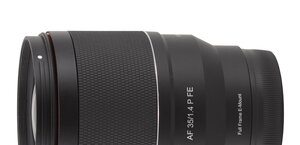Tamron SP AF 17-35 mm f/2.8-4 Di LD Aspherical (IF)
5. Chromatic aberration
At 17 mm the situation is not that bad because the aberration keeps there a more or less constant level of 0.1% which we consider medium. In the range of 24-35 mm we see something rather different, though. While near the maximum relative aperture the aberration is still medium or even low, it increases very steeply on stopping down. It doesn’t allow the lens to show its real possibilities. On stopping down the other off-axis aberration, like the coma or the astigmatism decrease swiftly, so the image at the edge should have improved. We don’t see the improvement here because the fast increase of chromatism interferes with it.

Please Support UsIf you enjoy our reviews and articles, and you want us to continue our work please, support our website by donating through PayPal. The funds are going to be used for paying our editorial team, renting servers, and equipping our testing studio; only that way we will be able to continue providing you interesting content for free. |
- - - - - - - - - - - - - - - - - - - - - - - - - - - - - - - - - - - - - - - - - - - - - - - -
One glance at the test charts crops, presented below, and you know how it looks in practice.
 |






